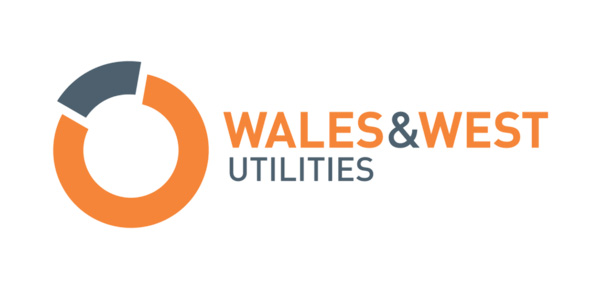Equipped for future efficiency with corporate-wide GIS
As part of a wide-ranging programme of IT transformation, Wales & West Utilities installed Esri’s ArcGIS platform, gaining a single, accurate view of assets along 34,000 km of gas pipelines. Integrated with SAP applications, ArcGIS is contributing to multi-million pound efficiency savings.
The Customer
Wales & West Utilities is a regulated gas distribution business with around 34,000 km of gas distribution pipelines located in Wales and the South West of England. Covering a sixth of the UK, Wales & West Utilities serves an area with a population of 7.4 million.
ArcGIS has facilitated the creation of new streamlined business processes in areas such as ‘design and build’
The availability of more accurate, up-to-date information supports high level decision making and enhances reporting
The organisation can now more easily share information with third parties, such as other utility companies to improve public safety
The Challenge
Wales & West Utilities was founded in 2005, when a consortium acquired the gas network for Wales and the West Country from National Grid Transco. Initially, the newly autonomous utility rented IT systems from its former owner, but it was keen to be independent as soon as possible.
It set about a huge programme of IT investment. “GIS was seen as a mission critical system that we needed to put in from the outset, to replace functionality provided by National Grid,” explains Phil Pike, Director of IT & Procurement.
However, the company didn’t just want to replicate the National Grid systems, it wanted to streamline processes enabling it to operate more efficiently. “From an IT systems perspective, we were starting with a blank piece of paper,” says Pike. “This gave us an opportunity to start from scratch with streamlined and centralised systems that would minimise our total cost of IT ownership.”
The company recognised that it would be more cost effective to have one GIS for the entire organisation and searched for a solution to meet the needs of its entire business. “Virtually everything that we do requires an understanding of where our pipes and other assets are located,” explains Pike. “We felt that it was important for us to be able to make clear, accurate and up-to-date information available throughout our organisation in a graphical and user-friendly format.”
ArcGIS is an integral part of our business
Phil Pike – Director of IT & Procurement
The Solution
Wales & West Utilities selected Esri’s ArcGIS Server solution. “We wanted an off-the-shelf product that was tried and tested in the gas sector,” says Pike. “We had aggressive timescales for implementing the new GIS solution, so strong gas industry experience and existing gas-specific functionality were extremely important for us.”
Wales & West Utilities gained a single joined-up view of its business assets and operations; easily accessible to desktop, intranet and field based users. It is now possible for accurate asset information to be shared easily between teams. For example, a designer in the new connections business can see which pipes the maintenance team are planning to repair or replace. This helps to cost and plan extensions to the gas network. Customer service teams can view accurate maps of pipelines to help them respond to customer enquiries. The company can react quickly to emergency calls and easily identify precise locations of leaks and outages improving public safety
ArcGIS Server is also delivering innovative new functionality to support network design. Designers can create plans for new connections and replacement pipelines directly within the central GIS. “If we didn’t have this integrated design and build capability, much of this process would be done manually on paper,” explains Nick Hancock, Senior Business Analyst. “The plans would then have to be digitised after the new pipes had been laid, which takes much longer.”
ArcGIS Server has been incorporated into the company’s wider IT environment. Wales & West Utilities uses SAP enterprise resource planning (ERP) software for its back office systems and has integrated a number of key processes across the two solutions. “ArcGIS and SAP are tightly coupled,” says Pike. “The flow of information between the two systems is very effective.”
We now have a single, common view of our asset information, in a graphical format, and this creates operational efficiencies across multiple different areas of our business
Phil Pike – Director of IT & Procurement
The Benefits
The availability of centralised, up-to-date asset information has led to the creation of new streamlined business processes, and the new GIS-enabled design and build capabilities have contributed to tangible time and cost savings.
“We now have a single, common view of our asset information, in a graphical format, and this creates operational efficiencies across multiple different areas of our business,” says Pike. “The deployment of a centralised GIS solution formed a key part of our business improvement programme. This IT transformation programme was seen as a key business enabler and has contributed to overall efficiency savings worth several million pounds.”
In the company’s management and administrative functions, improved availability of up-to-date data enhances reporting and supports high level decision making. ArcGIS is used to prepare and present information for regulatory compliance and health and safety audits.
ArcGIS has made it easier for the organisation to share information with third parties, such as other utility companies. “If a local electricity or water provider is undertaking essential repairs on a certain street, it will need to know exactly where our pipes are to ensure the safety of its engineers and the public,” explains Hancock. “Because designs are created in ArcGIS and there is no time delay between pipes being laid and maps being digitised, we can provide maps to third parties with more confidence in their accuracy.”



